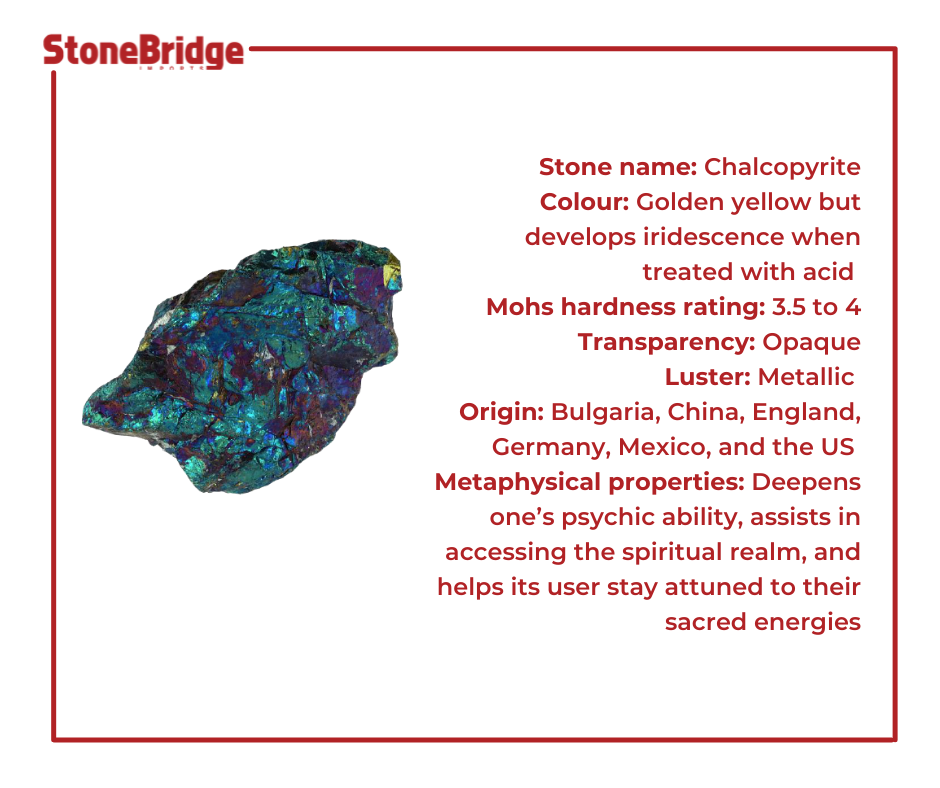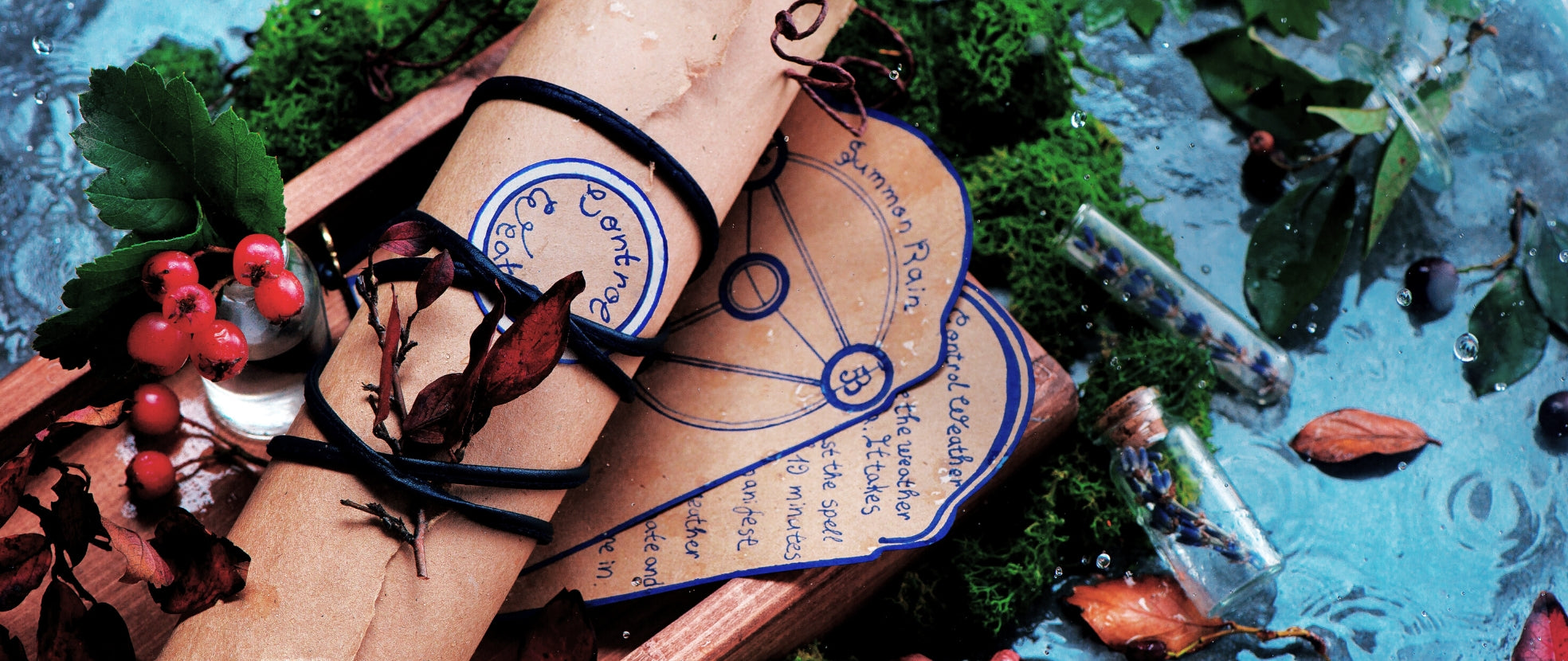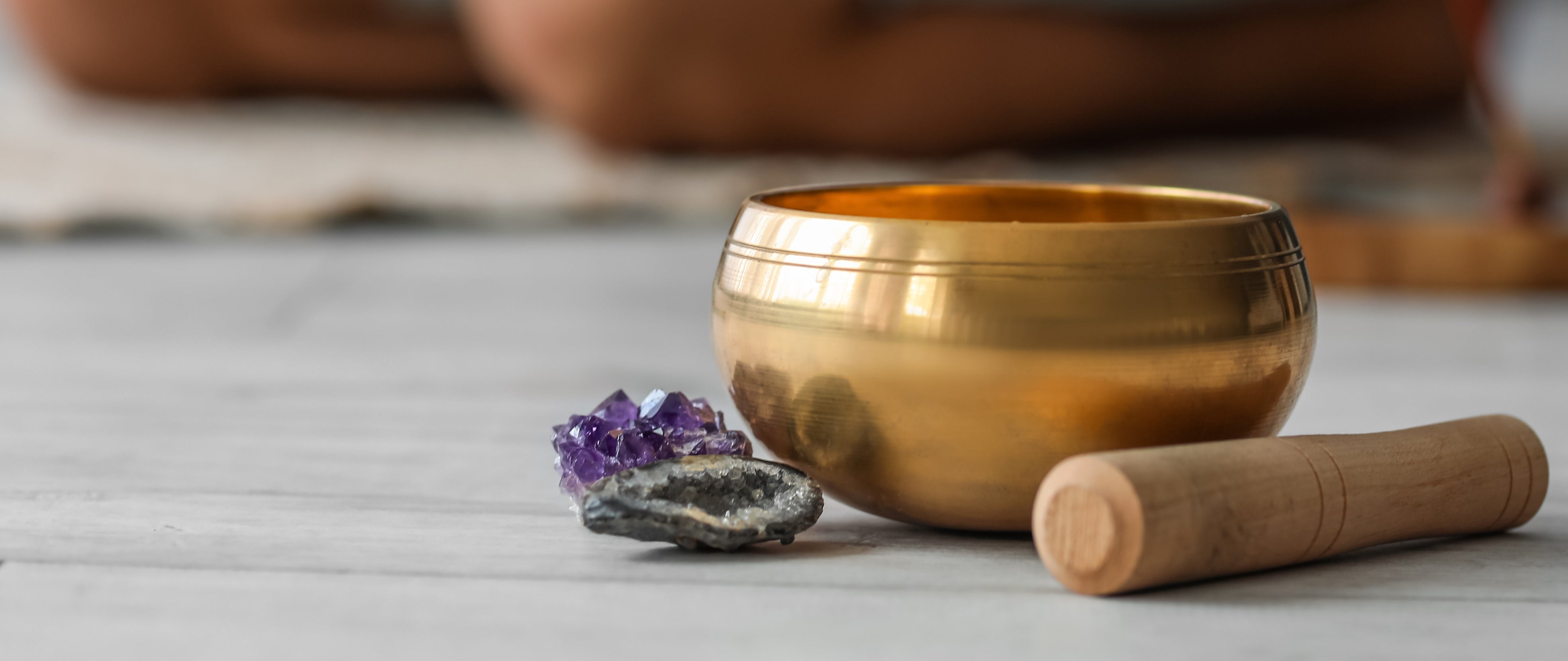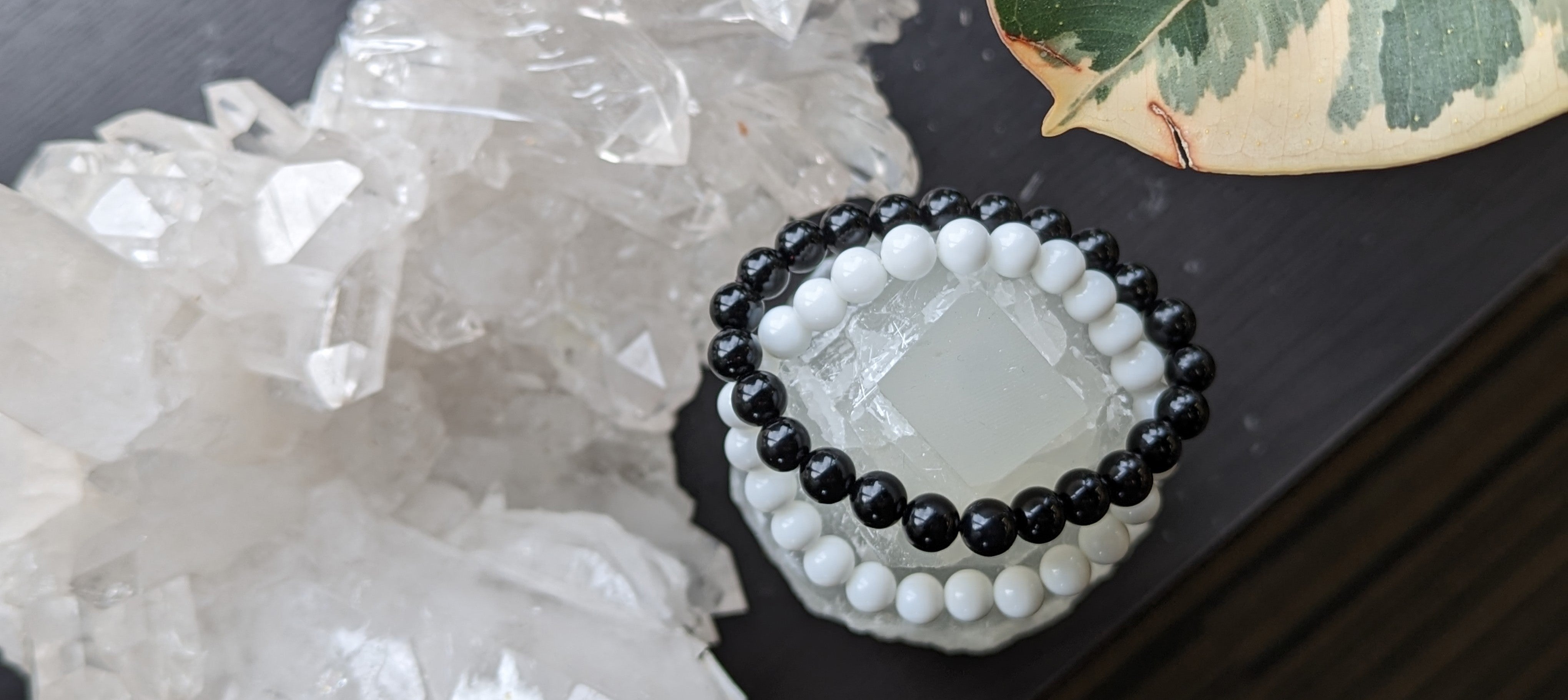Did you know that shape-shifting is also common in rocks and minerals? Nothing does shape-shifting better than the copper mineral Chalcopyrite – one moment it fools mineralogists that it is Gold, and the next thing you know it astonishes the naked eye with its brilliant iridescence.
In this article, we unravel the mystery behind Chalcopyrite's changing physical properties, including its lore and history.
The Physical Properties of Chalcopyrite
Chalcopyrite is a copper ore with a chemical composition of CuFeS2 (copper iron sulfide). It occurs as groups of small, tetragonal crystals in the hydrothermal veins igneous rocks or metamorphosed igneous rocks. It is known for its metallic sheen and golden yellow colour reminiscent of that of Gold. However, these qualities tend to tarnish upon weathering. Its colour can turn into gray-green when exposed to elements.
When treated with acid, opaque Chalcopyrite forms a unique and eye-catching iridescence on the surface consisting of red, blue, purple, and green colours. Chalcopyrite is a brittle mineral, with a hardness rating of 3.5 to 4 on the Mohs scale. This means it is easily scratched with a nail. The mineral is not a suitable material for gemstones, although it can be cut into cabochons and tumbled stones.
The History of Chalcopyrite
Chalcopyrite was first named by the German chemist Johann Friedrich Henckel in 1725. Its name originated from the Gree words chalkós meaning ˜copper' and pyrites which means ˜striking fire.' Civilizations back in the Bronze Age discovered that Copper can be extracted from Chalcopyrite by means of smelting (heating and melting the ore).
Today, Chalcopyrite is regarded as the world's principal source of copper. Due to its metallic luster and bright yellow colour similar to Gold, the mineral is often referred to as ˜Fool's Gold.' However, Chalcopyrite is lighter and softer than Gold.
Chalcopyrite can be found in several sulfide mineral deposits all over the world. These include Bulgaria, China, England, Germany, Mexico, and the US.

The Lore of Chalcopyrite
Reiki practitioners and shamans use Chalcopyrite to activate and align the chakras. Chalcopyrite is especially useful in activating the crown, third eye, and throat chakras, helping its user to become open-minded and to connect with the divine realm. It is also believed to assist in breaking bad habits and transitioning to new lifestyles.
The Metaphysical Properties of Chalcopyrite
Chalcopyrite is associated with rebirth and transformation. As it activates the third eye chakra, its user can experience greater intuition and improved vision of the future. Chalcopyrite is said to deepen one's psychic ability and assist in accessing the spiritual realm. It can also help its user stay attuned to their sacred energies. One can tap into the metaphysical benefits of Chalcopyrite by holding a tumbled stone during meditation or keeping it inside the pocket.
Sources:
King, H. (n.d.). Chalcopyrite. Geology.com. Accessed at https://geology.com/minerals/chalcopyrite.shtml
Chalcopyrite. (n.d.). Mindat.org. Accessed at https://www.mindat.org/min-955.html
The Mineral Chalcopyrite. (n.d.). Minerals.net. Accessed at https://www.minerals.net/mineral/chalcopyrite.aspx
Chalcopyrite. (n.d.). Crystal Council. Accessed at https://thecrystalcouncil.com/crystals/chalcopyrite
Chalcopyrite. (n.d.). De.zxc.wiki. Accessed at https://de.zxc.wiki/wiki/Chalkopyrit
Tmadmin. (n.d.). CHALCOPYRITE: The World’s Most Important Ore of Copper for Over Five Thousand Years. Treasure Mountain Mining. Accessed at https://www.treasuremountainmining.com/index.php?route=pavblog/blog&id=128





